Vicino
| Nome del prodotto | Nr. di inventario | Produttore | Anno di fabbricazione | Parametri | ||
|---|---|---|---|---|---|---|
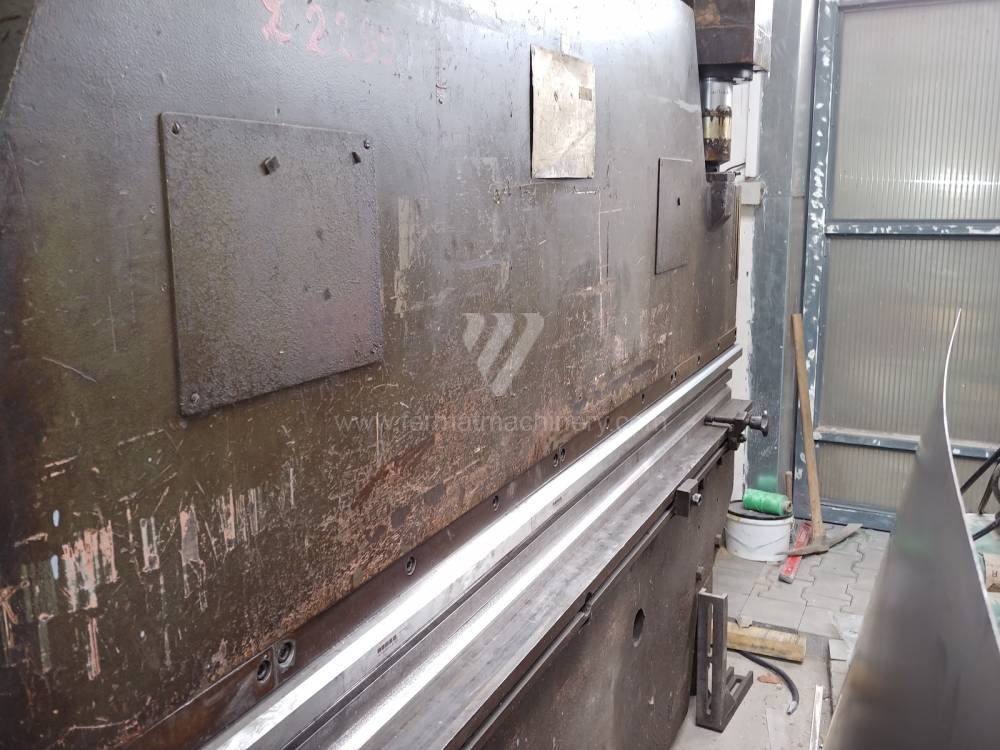 |
LE 100/3000 |
211319 | Gefi Györ | 1976 | Forza di pressione: 100 t Lunghezza di frenata: 3000 mm Tipo di azionamento della pressa: Hydraulický Potenza del motore elettrico principale: 17 kW Dimensioni lungh. x largh. x alt.: 3000 x 1170 x 2410 mm Peso della macchina: 7500 kg |
|
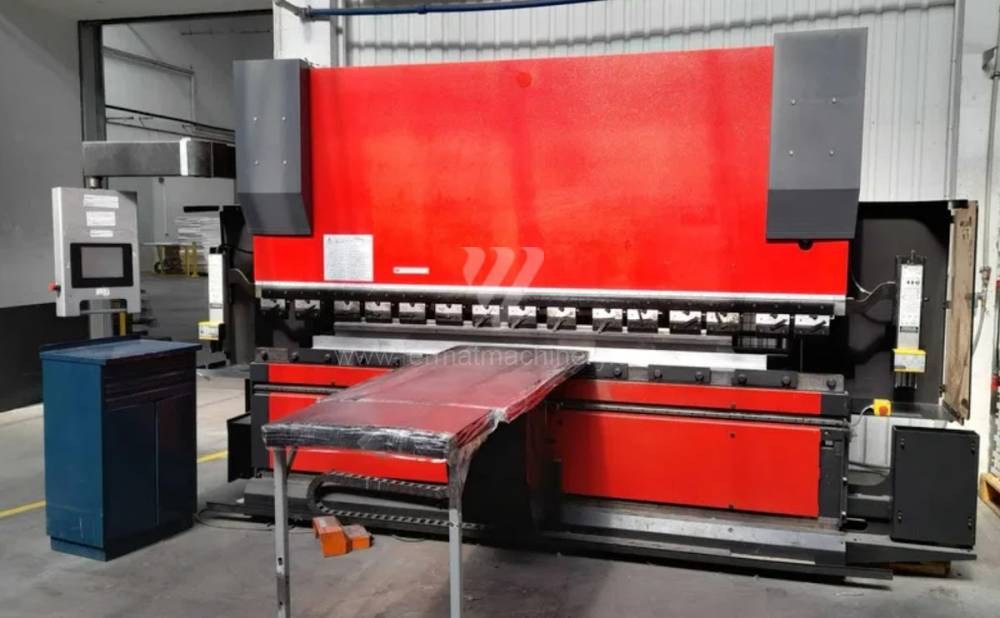 |
HFE 100 M2 |
241707 | AMADA | 2012 | Sistema di controllo Amada: Forza di pressione: 100 t Lunghezza di frenata: 3110 mm Numero di supporti trasversali: 7 Movimento di compensazione inferiore: Sì Tipo di azionamento della pressa: Hydraulický |
|
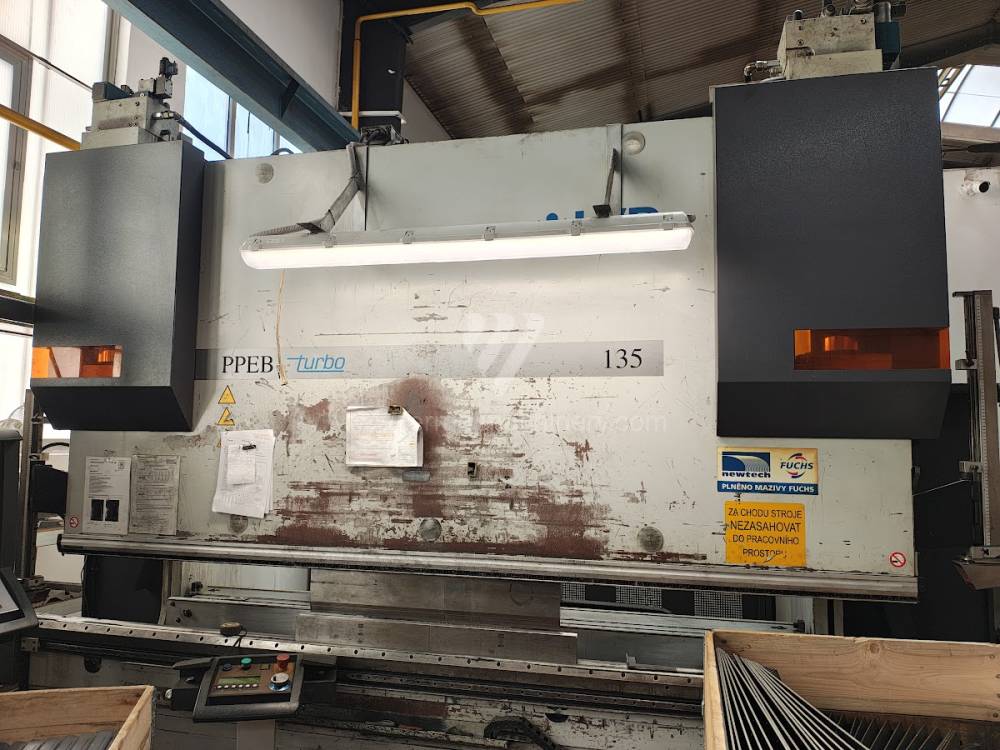 |
PPEB 135/30 |
251140 | LVD | 2004 | Sistema di controllo LVD: CADMAN Forza di pressione: 135 t Lunghezza di frenata: 3000 mm Numero di supporti trasversali: 5 Movimento di compensazione inferiore: Sì Tipo di azionamento della pressa: Hydraulický |
|
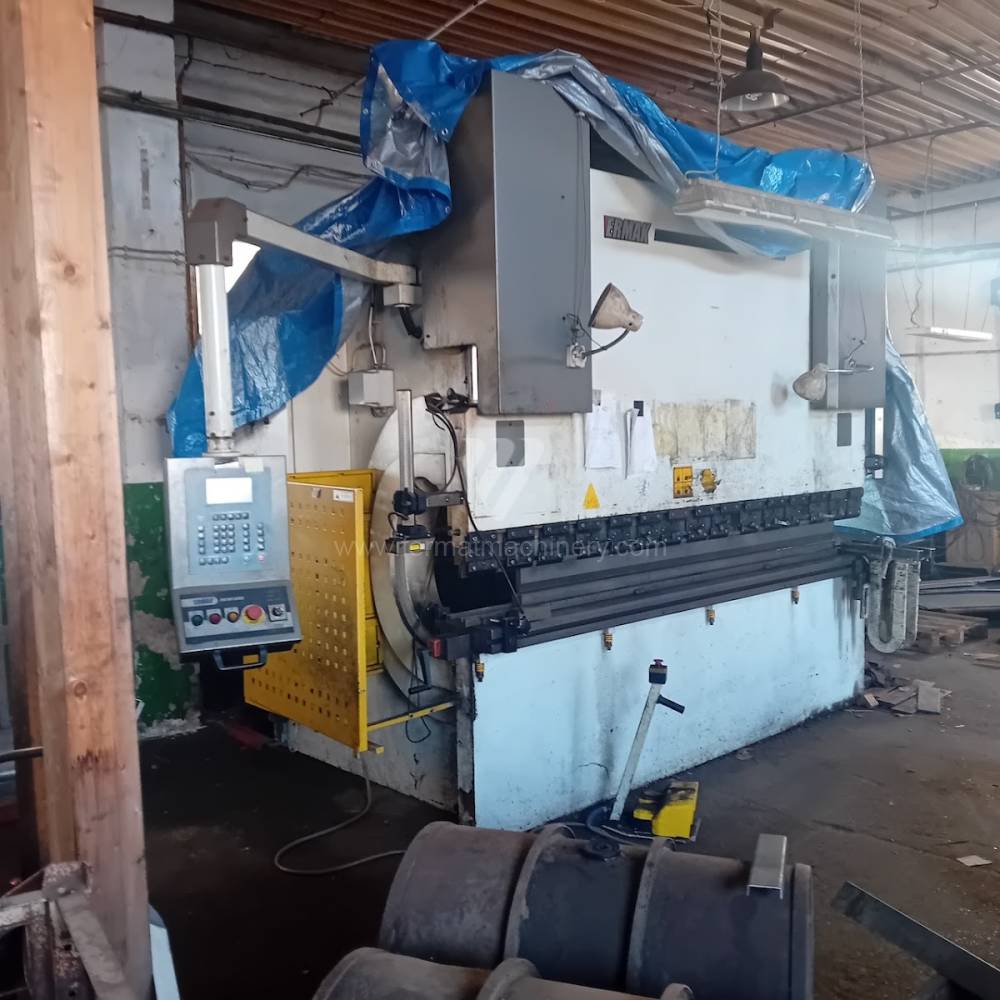 |
CNC HAP 3100x300 |
251692 | ERMAK | 2006 | Sistema di controllo Cybelec: Forza di pressione: 300 t Lunghezza di frenata: 3100 mm Numero di supporti trasversali: 3 Movimento di compensazione inferiore: Sì Tipo di azionamento della pressa: Hydraulický |
|
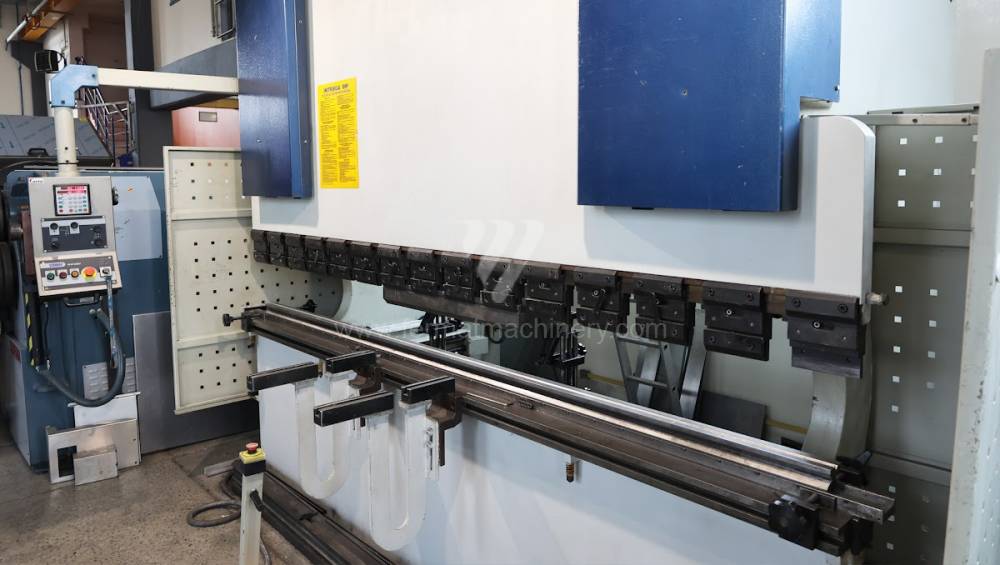 |
AP 3100/120 |
251599 | ERMAKSAN | 2005 | Forza di pressione: 120 t Lunghezza di frenata: 3100 mm Numero di supporti trasversali: 3 Movimento di compensazione inferiore: Sì Tipo di azionamento della pressa: Hydraulický Peso della macchina: 8200 kg |
|
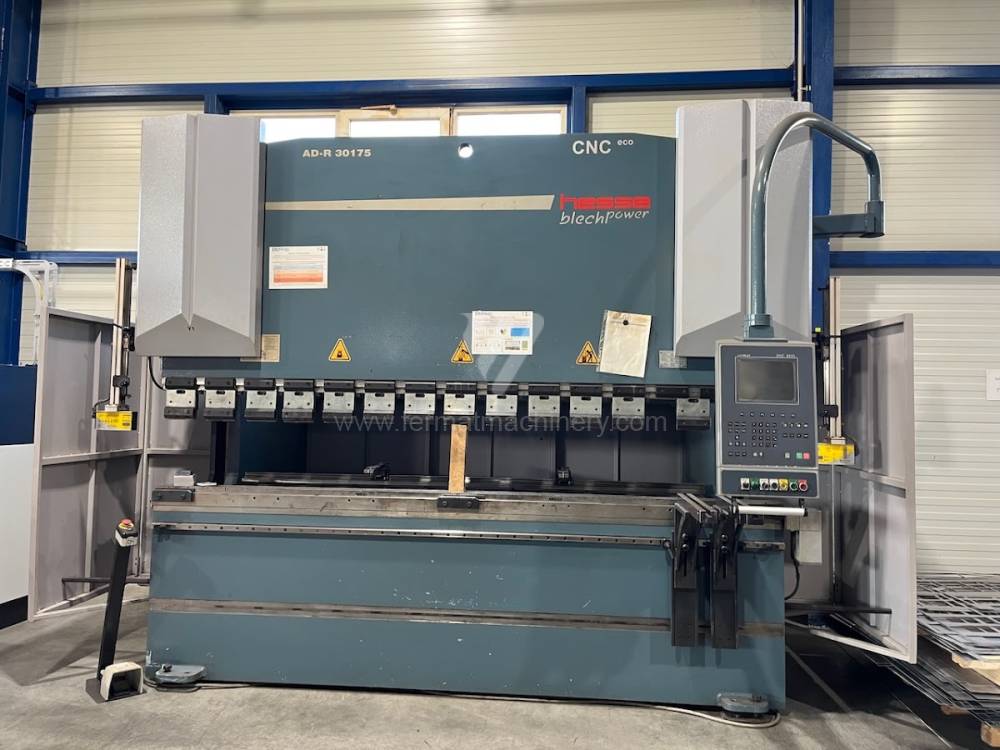 |
AD-R 30175 |
251148 | Durma Turkey | 2013 | Sistema di controllo Cybelec: Forza di pressione: 175 t Lunghezza di frenata: 3050 mm Numero di supporti trasversali: 4 Movimento di compensazione inferiore: Sì Tipo di azionamento della pressa: Hydraulický |
|
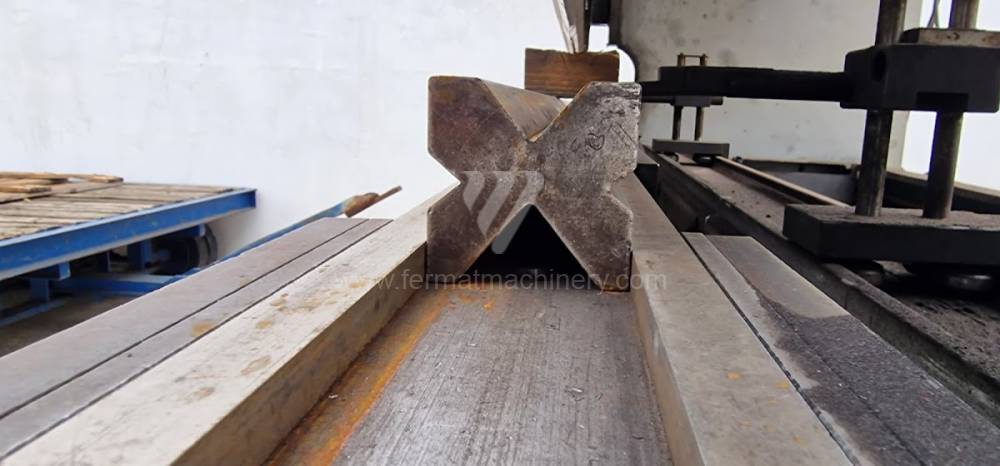 |
OMAG EPB 15026 |
251736 | OMAG | 2006 | Forza di pressione: 150 t Lunghezza di frenata: 3075 mm Scarico: 200 mm Corsa del maglio: 200 mm Potenza del motore elettrico principale: 11 kW Peso della macchina: 7 800 kg |
|
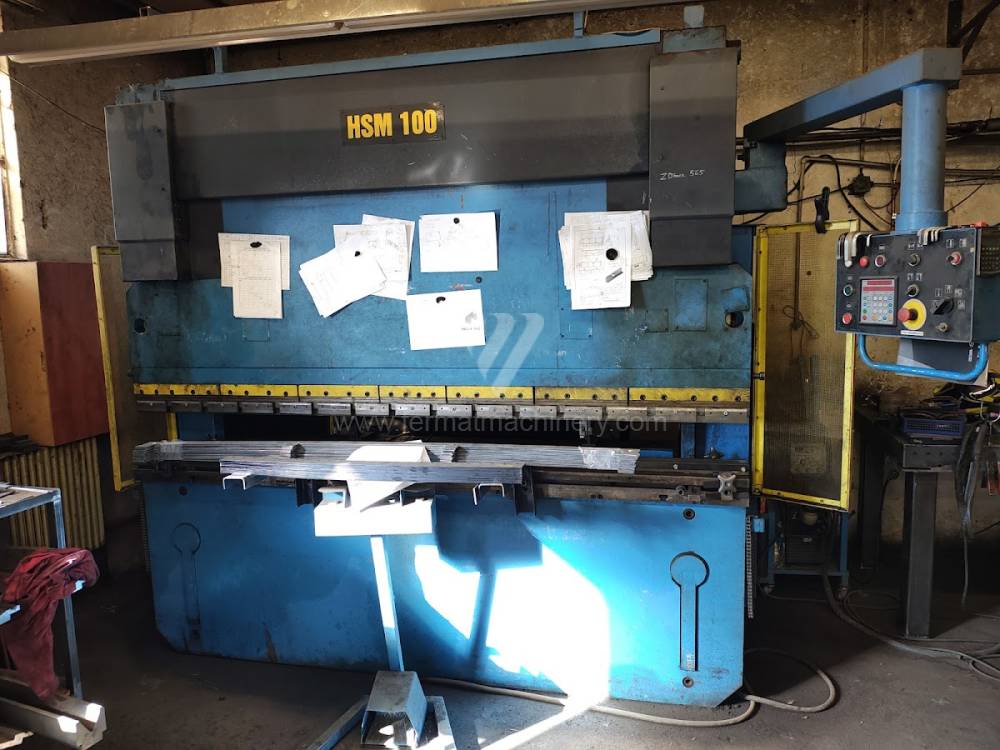 |
CTO 100/2500 |
251561 | Stroje a zariadenia Piesok s.r.o. | 2004 | Forza di pressione: 100 t Lunghezza di frenata: 2500 mm Tipo di azionamento della pressa: Hydraulický Peso della macchina: 6600 kg |
|
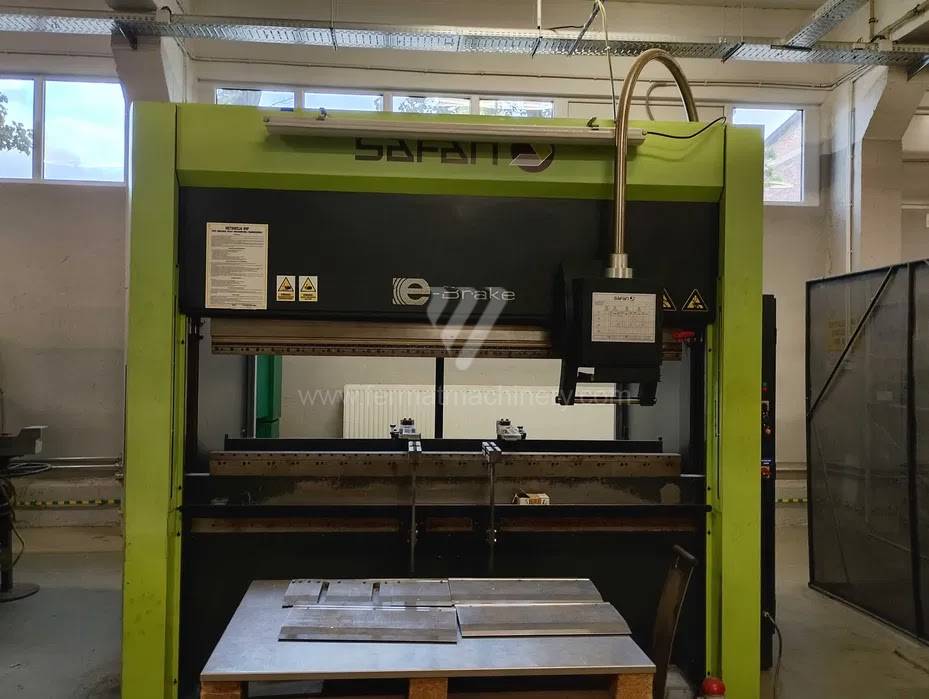 |
E-brake 50-2050 TS 1 |
251950 | Safan | 2008 | Forza di pressione: 50 t Lunghezza di frenata: 2050 mm Numero di supporti trasversali: Movimento di compensazione inferiore: Tipo di azionamento della pressa: Potenza del motore elettrico principale: 7 kW |
|
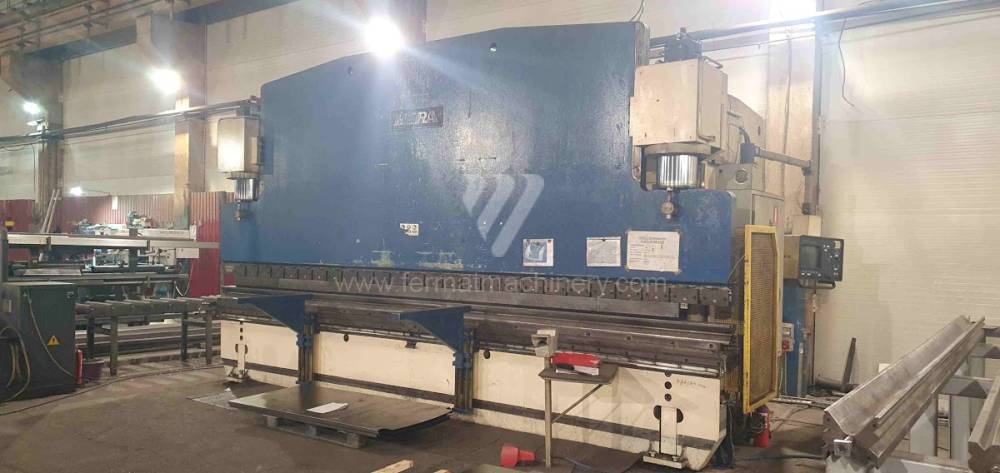 |
HERA COP 400/6000 |
251450 | HERA | 1992 | Sistema di controllo Cybelec: DNC 94 Forza di pressione: 400 t Lunghezza di frenata: 6100 mm Numero di supporti trasversali: 2 Movimento di compensazione inferiore: Tipo di azionamento della pressa: Hydraulický |
|
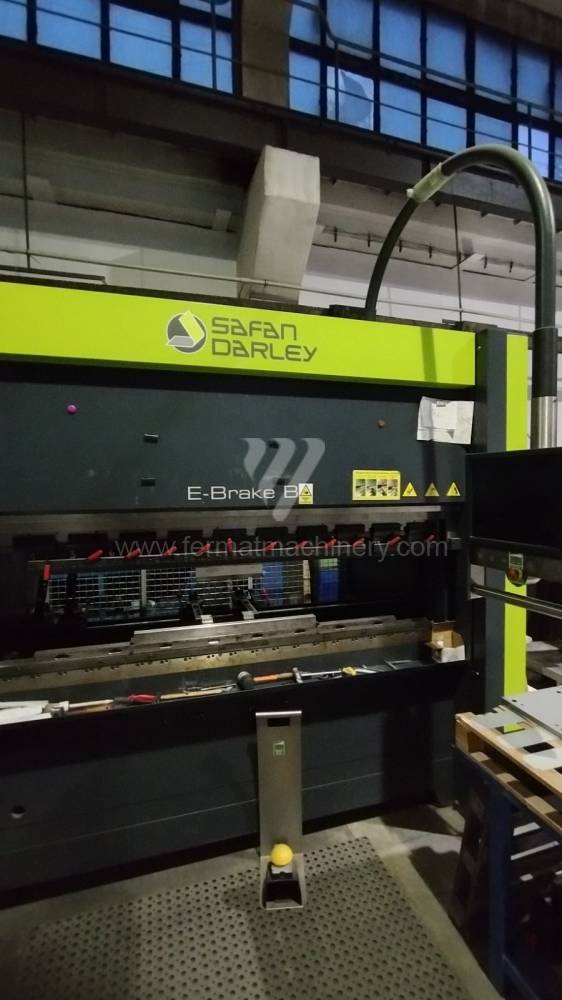 |
E-brake B 50-2050 |
251025 | Safan | 2017 | Forza di pressione: 50 t Lunghezza di frenata: 2050 mm Numero di supporti trasversali: 4 Movimento di compensazione inferiore: Sì Tipo di azionamento della pressa: Elektrický Potenza del motore elettrico principale: 11 kW |
|
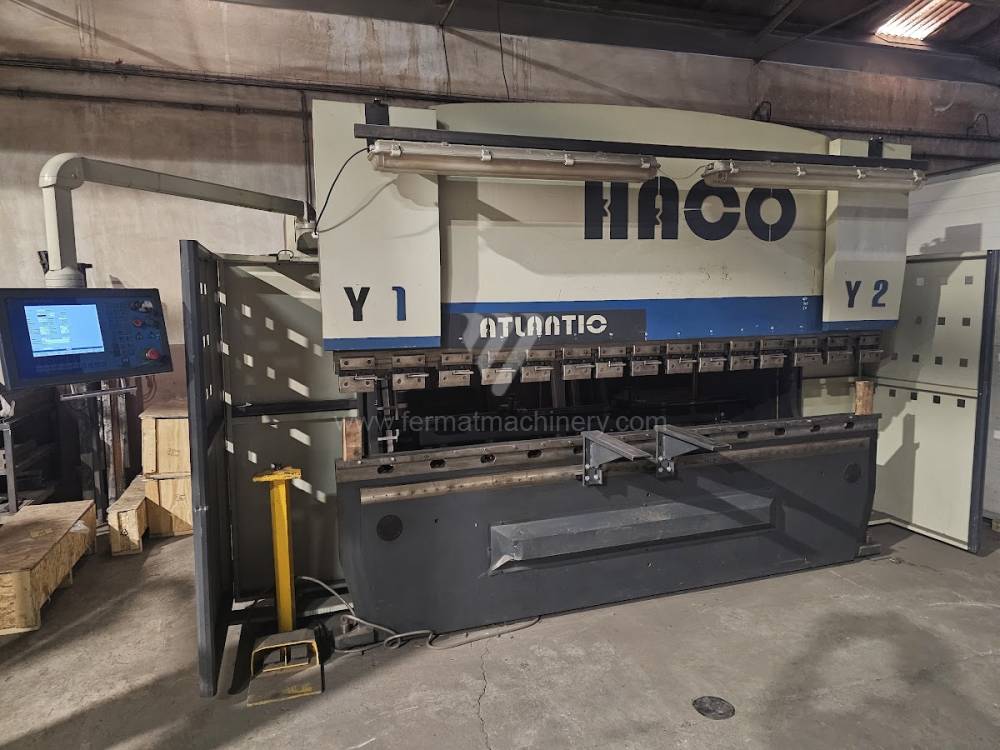 |
ATP 32 100 |
241968 | HACO | 2015 | Sistema di controllo Haco: Forza di pressione: 100 t Lunghezza di frenata: 3200 mm Numero di supporti trasversali: 4 Movimento di compensazione inferiore: Sì Tipo di azionamento della pressa: Hydraulický |
|
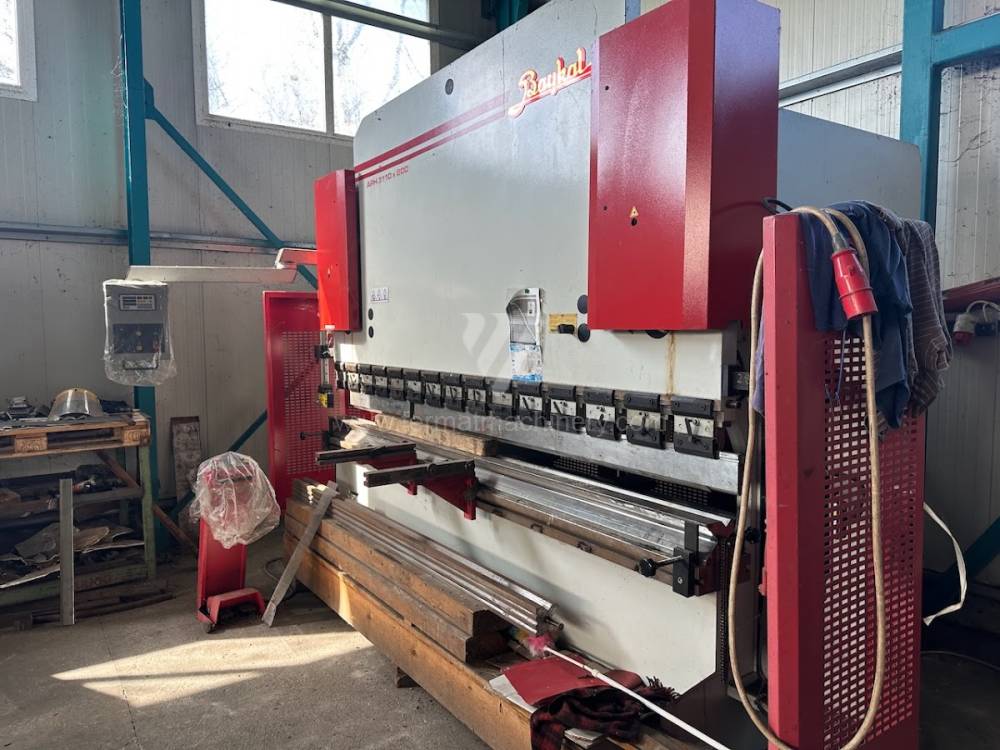 |
APH 3110x200 NC |
251333 | BAYKAL | 2012 | Lunghezza di frenata: 3100 mm Forza di pressione: 200 t Numero di supporti trasversali: 2 Tipo di azionamento della pressa: Hydraulický Movimento di compensazione inferiore: Sì Corsa del maglio: 150÷250 mm |
|
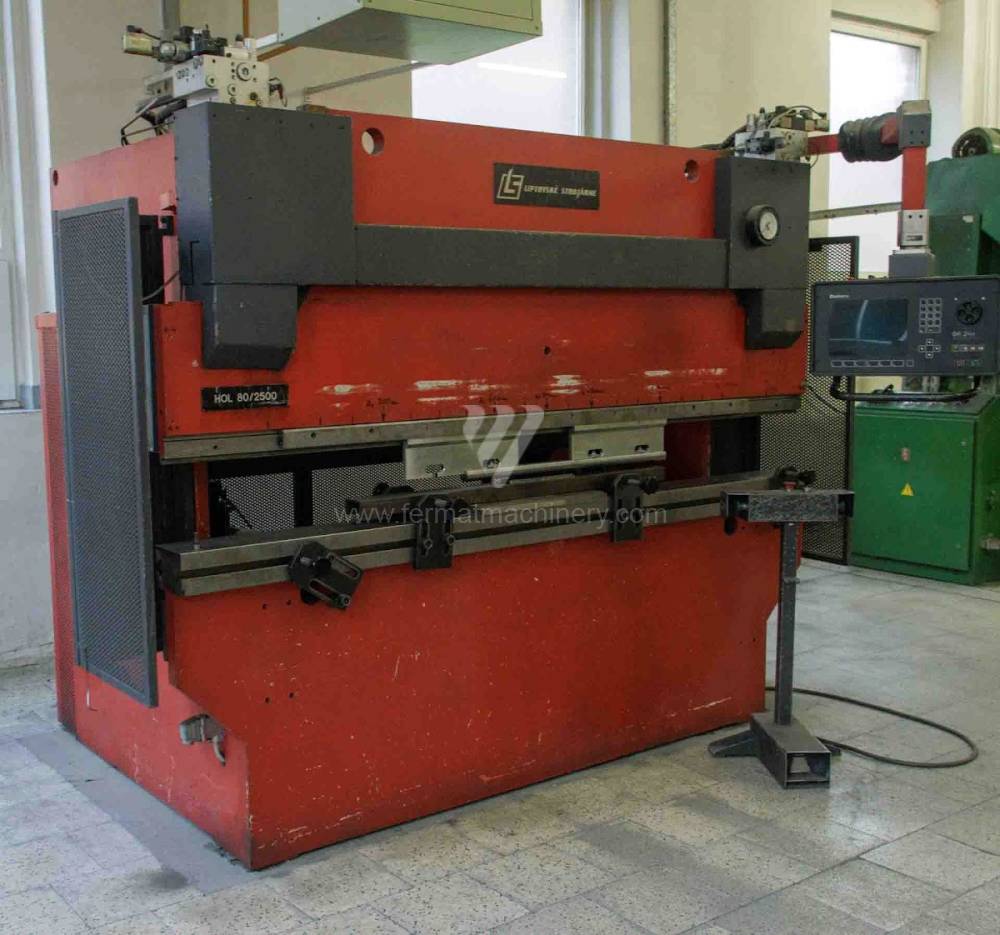 |
HOL 80/2500 |
241679 | Liptovské strojárne | 1997 | Sistema di controllo Delem: DA 24e Forza di pressione: 80 t Lunghezza di frenata: 2500 mm Numero di supporti trasversali: 4 Movimento di compensazione inferiore: No Tipo di azionamento della pressa: Hydraulický |
|
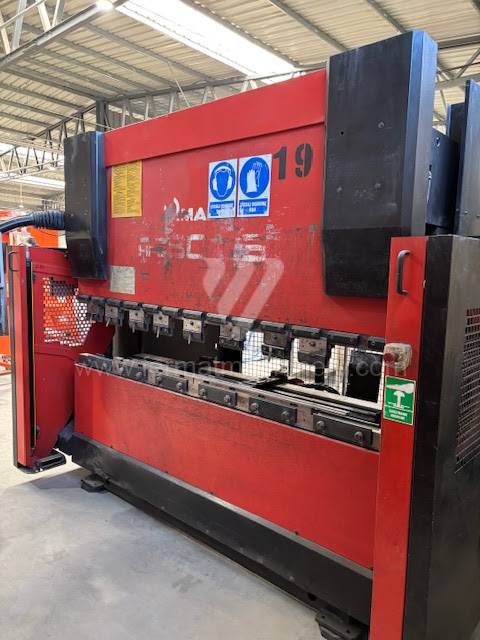 |
HFE 80-25 |
251793 | AMADA | 2001 | Forza di pressione: 80 t Lunghezza di frenata: 2500 mm Numero di supporti trasversali: 8 Movimento di compensazione inferiore: Sì Tipo di azionamento della pressa: Hydraulický Dimensioni lungh. x largh. x alt.: 3500x1600x2500 mm |
|
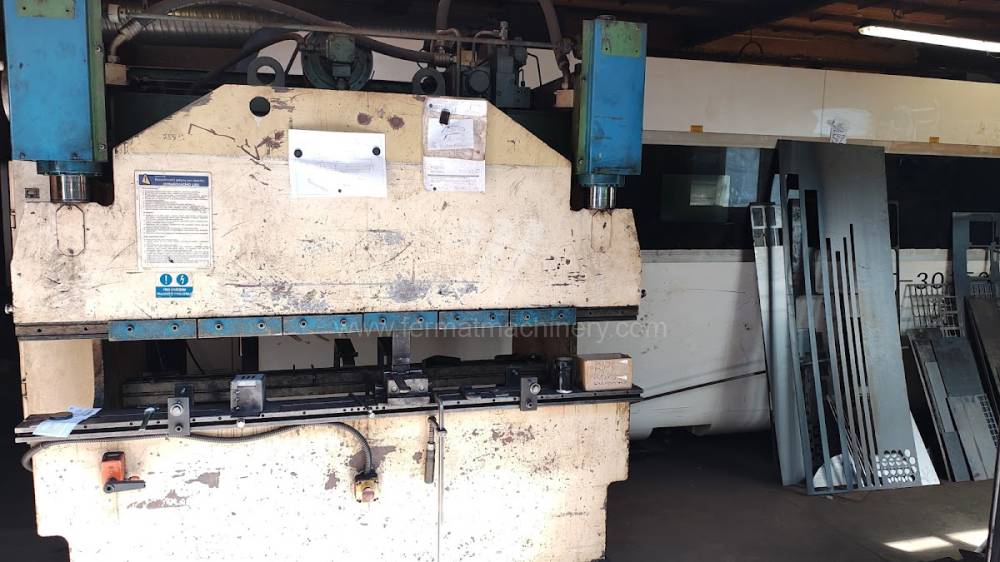 |
PPC 50/20 |
251607 | LVD | 1984 | Forza di pressione: 50 t Lunghezza di frenata: 2000 mm Tipo di azionamento della pressa: Hydraulický |
|
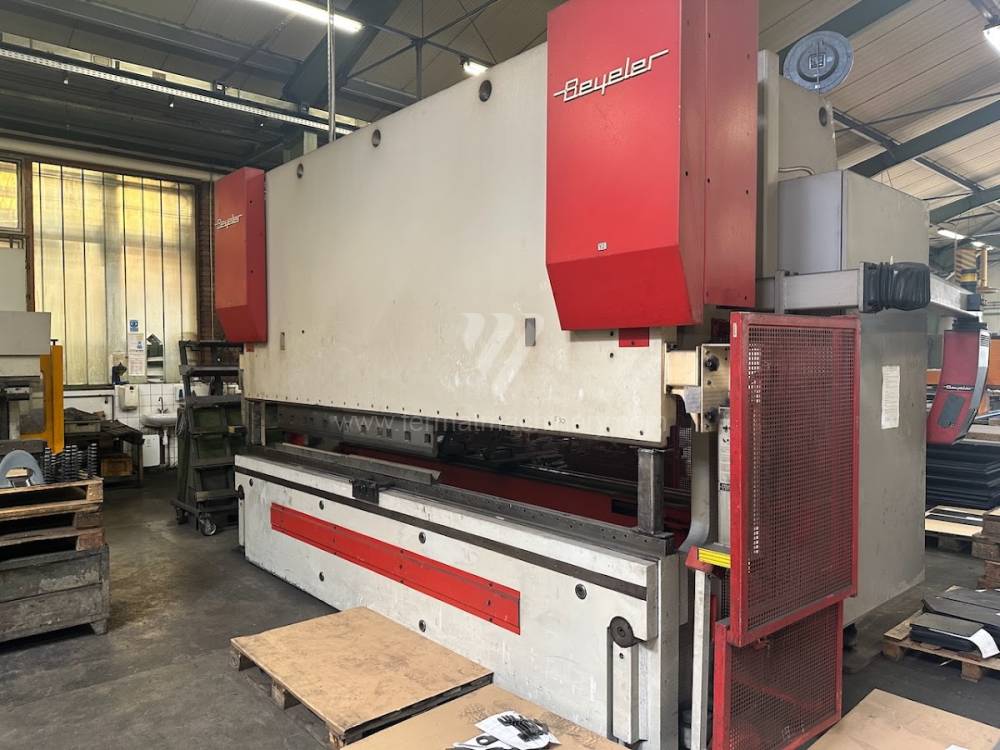 |
PR 6 320-4100 |
251570 | Beyeler | 2002 | Sistema di controllo Cybelec: Forza di pressione: 320 t Lunghezza di frenata: 4100 mm Numero di supporti trasversali: 6 Movimento di compensazione inferiore: Sì Tipo di azionamento della pressa: Hydraulický |
|
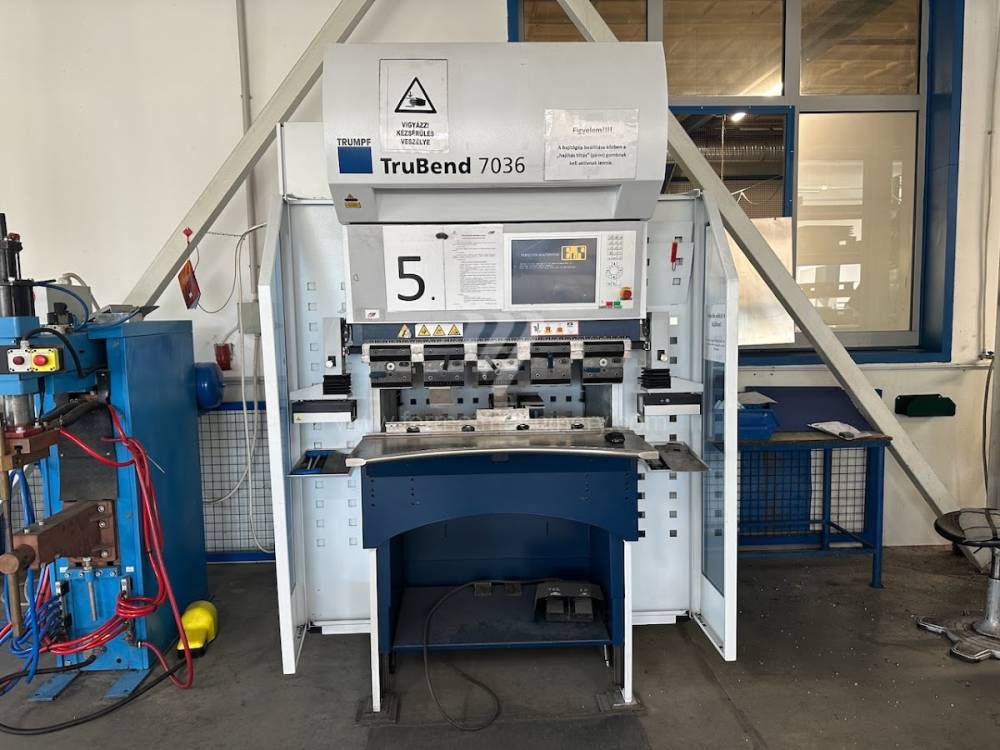 |
Trubend 7036 |
241892 | Trumpf | 2018 | Forza di pressione: 36 t Lunghezza di frenata: 1020 mm Numero di supporti trasversali: 8 Movimento di compensazione inferiore: No Tipo di azionamento della pressa: electro-mechanical Corsa del maglio: 120 mm |
|
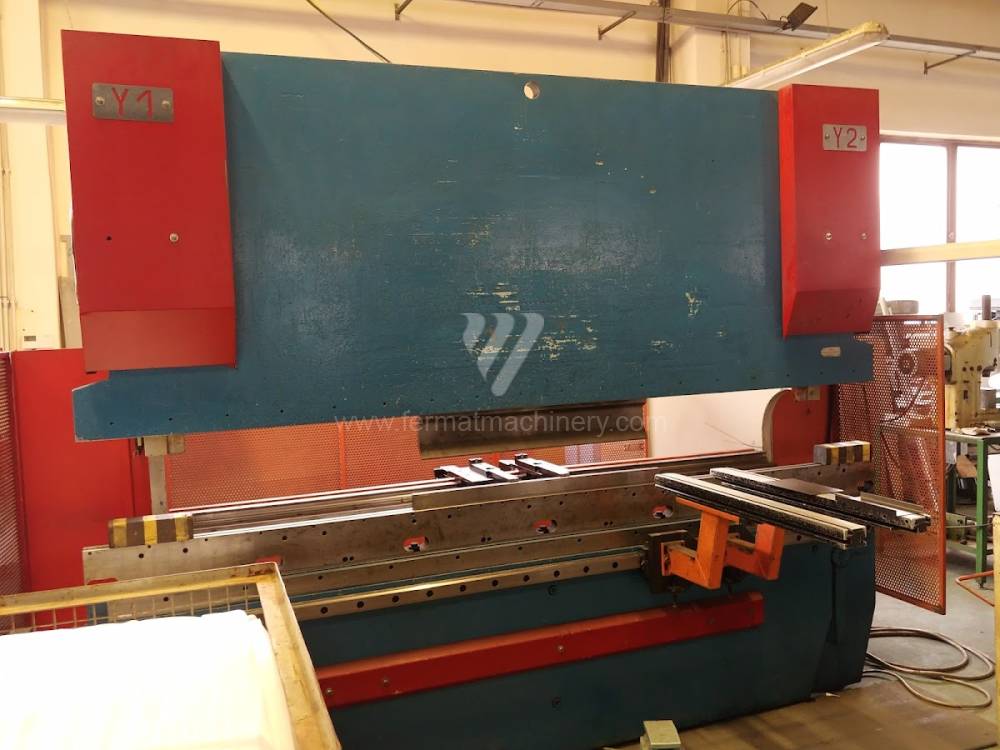 |
PR 6 |
231192 | Beyeler | 1997 | Lunghezza di frenata: 3100 mm Forza di pressione: 100 t Sistema di controllo Cybelec: DNC 800 Numero di supporti trasversali: 6 Tipo di azionamento della pressa: Hydraulický Movimento di compensazione inferiore: Sì |
|
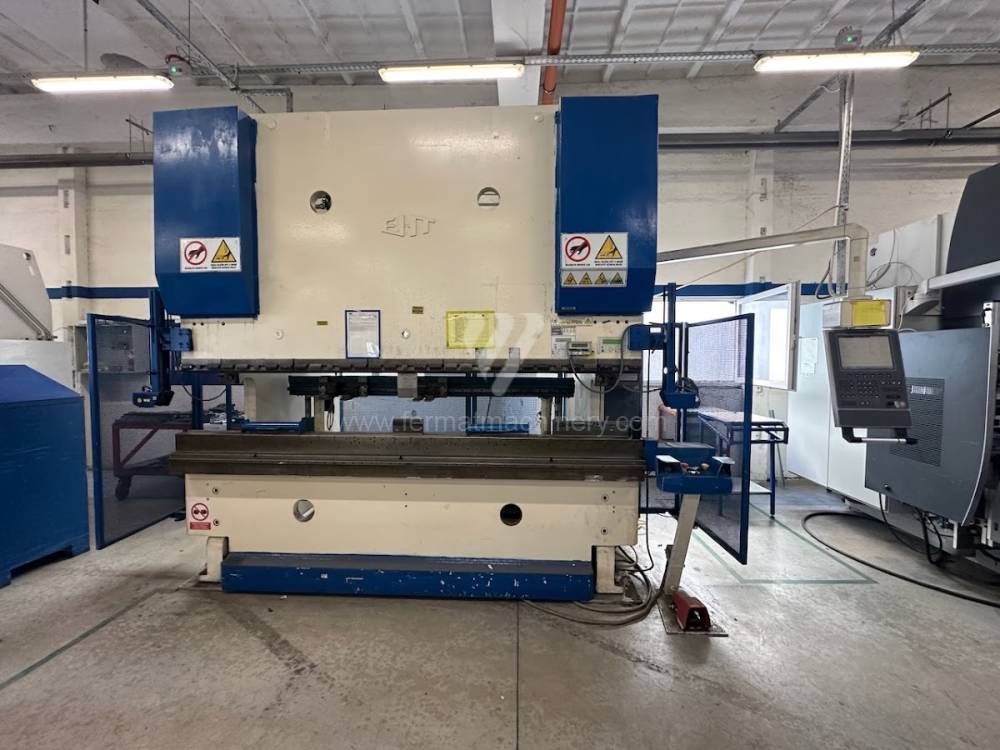 |
EHPS 200-3050 |
251375 | EHT | 1996 | Sistema di controllo Cybelec: ModEva 12S Forza di pressione: 200 t Lunghezza di frenata: 3050 mm Numero di supporti trasversali: 4 Movimento di compensazione inferiore: Sì Tipo di azionamento della pressa: Hydraulický |
|
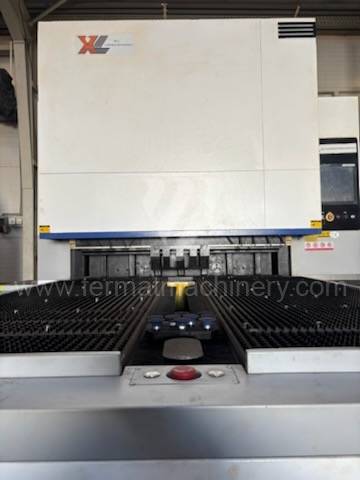 |
GKS-BC0315 |
251982 | GWEIKE | 2023 | Forza di pressione: t Lunghezza di frenata: 1500 mm Numero di supporti trasversali: Movimento di compensazione inferiore: Tipo di azionamento della pressa: Peso della macchina: 10000 kg |
|
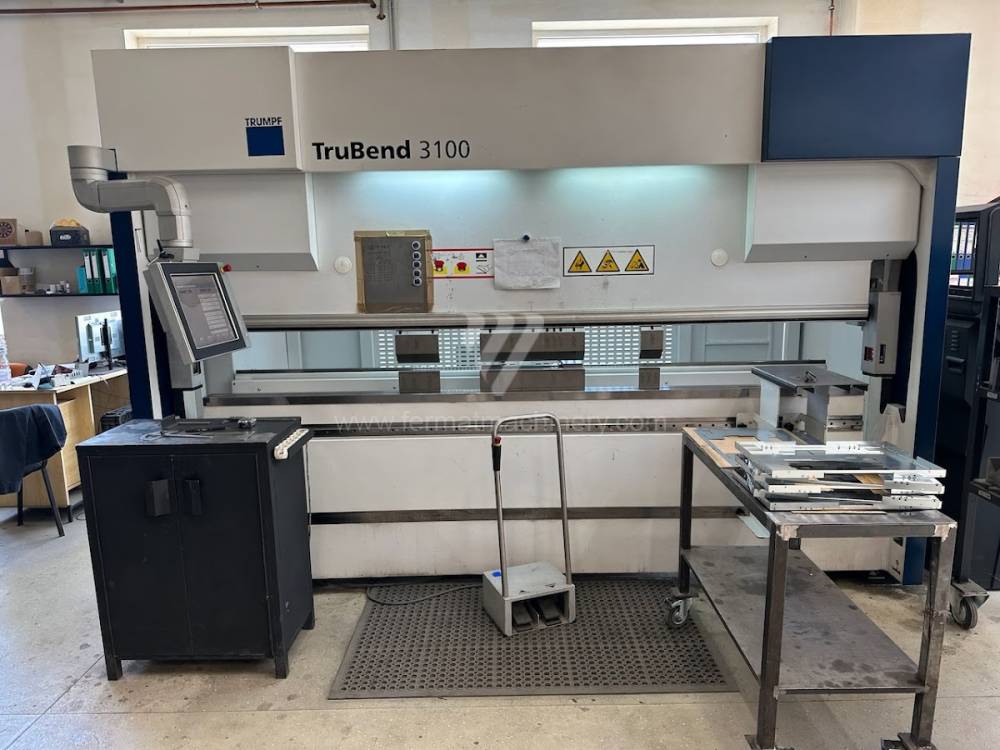 |
TruBend 3100 |
251788 | Trumpf | 2016 | Forza di pressione: 100 t Lunghezza di frenata: 3060 mm Numero di supporti trasversali: 6 Movimento di compensazione inferiore: Sì Tipo di azionamento della pressa: Hydraulický Passaggio tra i montanti: 3384 mm |
|
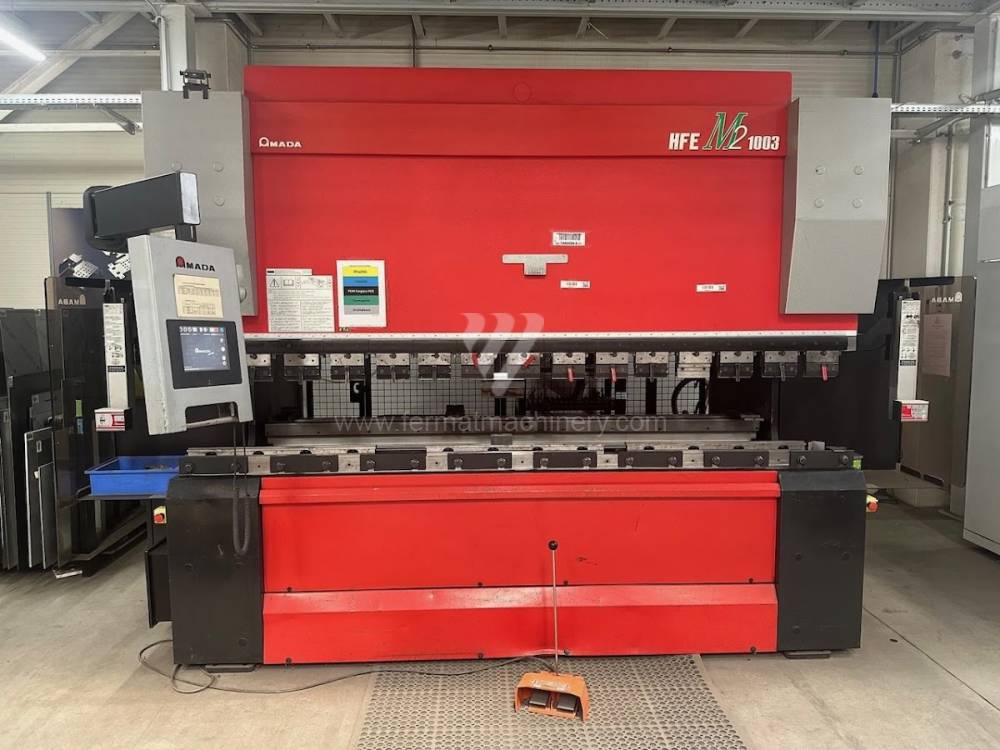 |
HFE-1003M2 |
251787 | AMADA | 2013 | Sistema di controllo Amada: Forza di pressione: 100 t Lunghezza di frenata: 3110 mm Numero di supporti trasversali: 8 Movimento di compensazione inferiore: Sì Tipo di azionamento della pressa: Hydraulický |
|
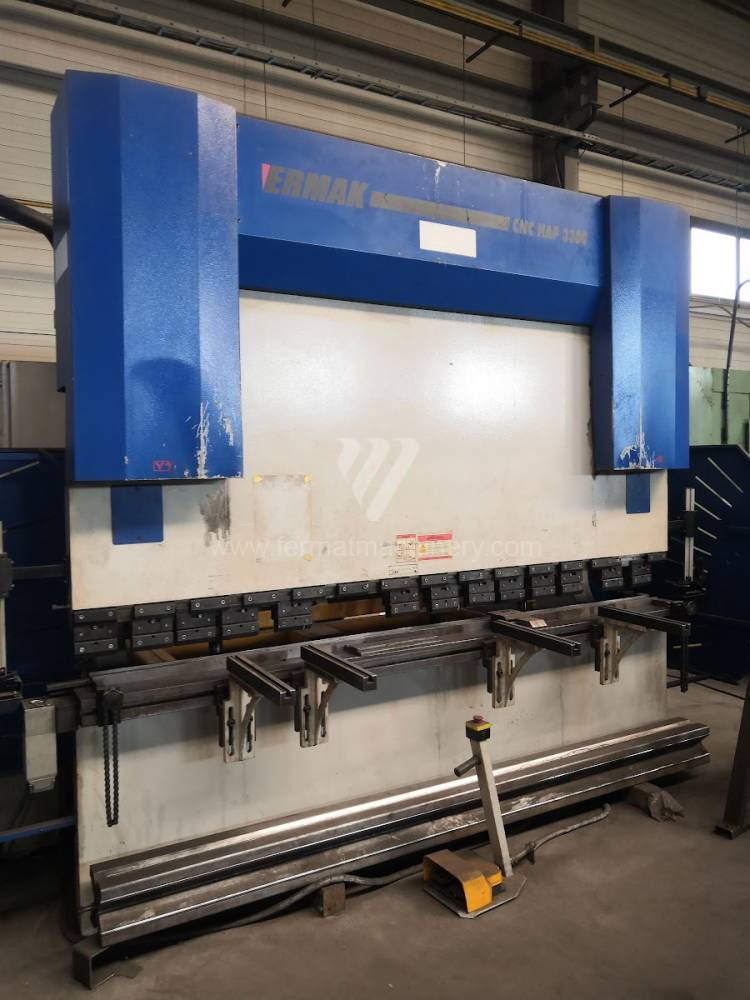 |
CNC HAP 3100 x 300 |
251224 | ERMAKSAN | 2010 | Sistema di controllo Ermaksan: Forza di pressione: 300 t Lunghezza di frenata: 3100 mm Numero di supporti trasversali: 4 Movimento di compensazione inferiore: No Tipo di azionamento della pressa: Hydraulický |
|
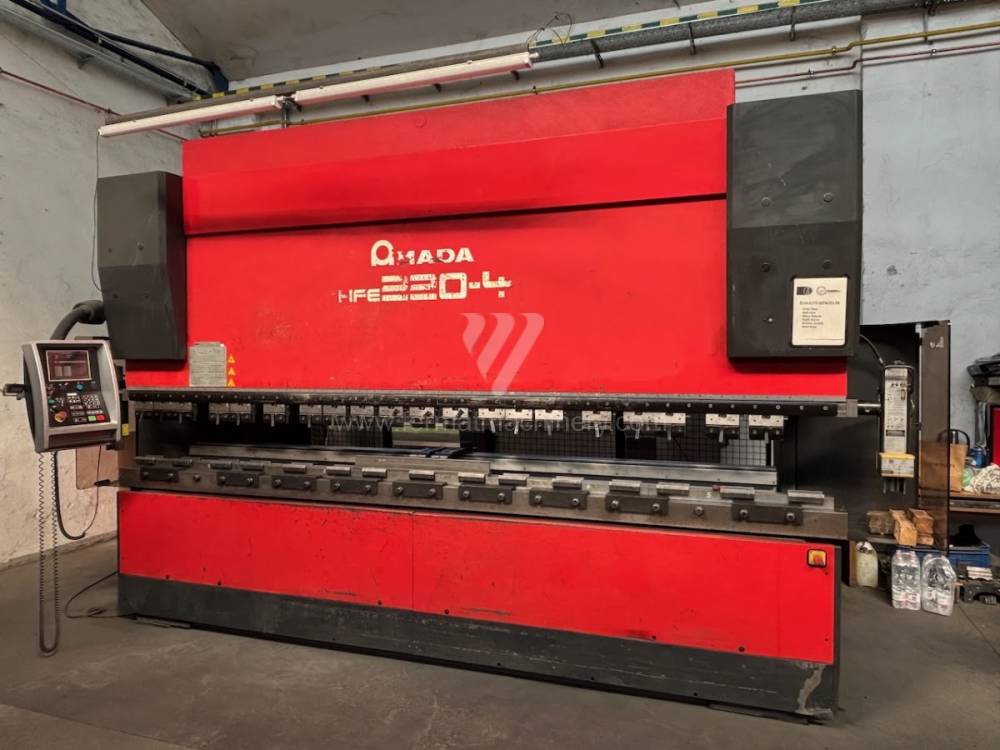 |
HFE 220-4 |
251786 | AMADA | 2008 | Sistema di controllo Amada: Forza di pressione: 220 t Lunghezza di frenata: 4000 mm Numero di supporti trasversali: 6 Movimento di compensazione inferiore: Sì Tipo di azionamento della pressa: Hydraulický |
Forming machines used for processing (bending) of sheet metal. These machines are currently replaced by bending machines, because they are hydraulically driven and can work with greater pressures and lengths of bent parts.
During this kind of material processing , there is no waste and semi-finished products are used. It is also possible to bend very small workpieces of very small radius.
Different types of punches and dies are used here as tools. These tools can be of different shapes and lengths. To clamp these tools mechanical or hydraulic clamping is used. Laser inspection can be used for maximum tool accuracy. Mechanical systems are used to drive the press, with an electric motor driving a system of pulleys and belts. Or a hydraulic one, which drives the hydraulic unit via an electric motor and the latter moves the ram through the pressure of the cylinders.
The rear stop is very important for a press brake. It ensures the correct positioning of the workpiece in the machine. Semi finished product is pressed against the thumb, which is on the stop and ensures the correct position with respect to the tool. The rear stop is controlled by a CNC system and it moves to precise positions according to the program. Machine can operate in up to 6 axes.
X - along which the stop moves forward and backward
Z - along which the stop moves to the left or to right
R - along which the stop moves up and down
Another important function of press brakes is cambering. It is a process when the the long parts are bended the resistance of the material to the upper tool, elastic deformation of the part of the ram with the punch occurs. This can be prevented by underlying the matrix in the central part, grooves on the edges of the working table or automatic system.
Today, press brakes are controlled by a computer systems. Based on the entered values (material, tools, length, etc…) calculates the production process, the movement of the stops or the bending force. Afterwards the machine can work in three following modes .
Press brakes are designed with different types of drivers such as machines with manual control, mechanical or hydraulic driver. Each has its advantages and disadvantages. Furthermore, it is possible to divide press brakes according to their construction into segmental, tandem and combined.
Most popular manufacturers are TRUMPF, DURMA, SAFAN DARLEY, BYSTRONIC, GASPARINI, Haco, Beyeler, Promecam, Hämmerle.
Currently, the most widely used and manufactured are hydraulic press brakes, which are CNC controlled.Top machines are from following manufacturers: Trumpf, Amada, Bystronic. These manufacturers use either their own CNC system for control or universal ones such as Delem, Cybelec, ESA.. These machines achieve a high level of automation of the operating cycles and therefore the maximum use of their capabilities. Of course press brakes from these top manufacturers are very expensive to purchase.